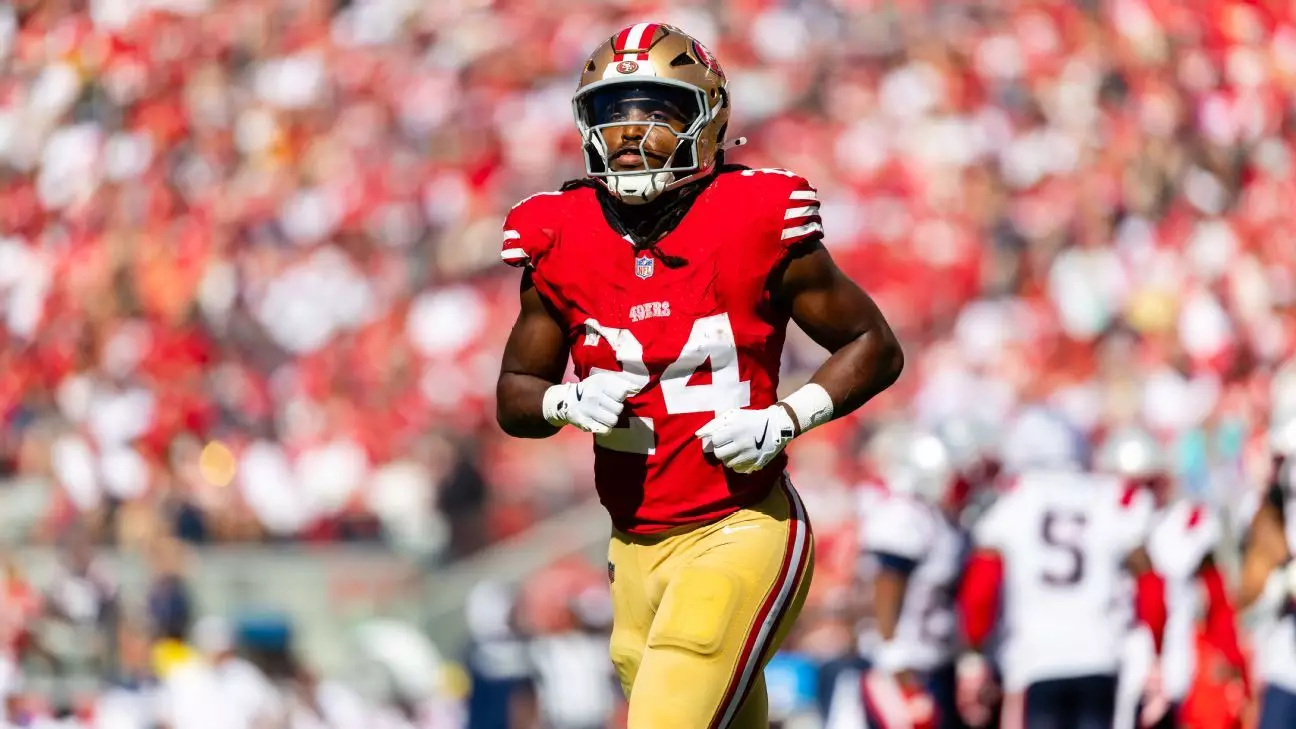The Minnesota Vikings have actively sought to enhance their roster this offseason, marking a pivotal shift in their approach to the game. On a recent Saturday night, they completed a strategic trade to bring running back Jordan Mason from the San Francisco 49ers to Minneapolis. This trade is not merely a transaction; it symbolizes the Vikings’ commitment to building a stronger, more dynamic team capable of making waves in the postseason. By sending a 2026 sixth-round pick to San Francisco and swapping positions in the upcoming draft, the Vikings have cleverly positioned themselves to bolster their roster both in the immediate future and beyond.
The details of the deal reveal a serious investment from Minnesota, as Mason’s new two-year contract includes $7 million fully guaranteed, potentially reaching $12 million. This commitment not only illustrates the Vikings’ belief in Mason’s talents but also highlights their intention to prioritize a robust running game. In pairing Mason with established starter Aaron Jones, who recently re-signed in a generous two-year, $20 million deal, Minnesota is clearly focused on creating a powerful backfield duo that can share the responsibility of carrying the offensive load.
Mason’s Rise and Injury Background
At just 25 years old, Jordan Mason’s journey from undrafted free agent to lead back in San Francisco has been nothing short of remarkable. Initially making an impact on special teams, Mason earned his place on the roster with sheer determination and impressive performance. He proved his worth during an injury-stricken 2024 season, stepping up as San Francisco’s lead rusher. Despite Christian McCaffrey’s absence due to an Achilles injury, Mason thrived under pressure and emerged as one of the league’s top rushers. His statistics tell a compelling story: 789 yards on 153 carries, along with three touchdowns over just six starts.
However, Mason’s trajectory was not without setbacks. A high ankle sprain sidelined him for the final five games of the season, raising concerns about his durability. The fact that San Francisco placed a second-round tender on him prior to the trade indicates their recognition of his potential, albeit tempered by the risk of injury. It’s evident that the Minnesota Vikings are banking on Mason’s capacity to deliver and stay healthy, aligning with a franchise eager to make a serious run in the playoffs.
A Stronger Offensive Line Underpins the Strategy
To complement this new backfield dynamic, Minnesota has also invested heavily in its offensive line. The addition of center Ryan Kelly and right guard Will Fries, both signed to lucrative multiyear deals totaling an astounding $107 million, adds an imposing structure to the Vikings’ offense. This fortified line is not just a backdrop for the running backs; it is the backbone of their strategy, ensuring that both Jones and Mason benefit from protection that can open up lanes and provide ample opportunities to shine on the field.
In crafting this robust line, Minnesota is addressing one of the key areas where they fell short in previous seasons. A solid offensive line not only protects the quarterback but also transforms the running game, allowing backs like Mason to exploit defenses effectively. Given that a substantial part of success in the NFL relies on maintaining a balanced offensive attack, the Vikings’ strategic investments mark a forward-thinking approach poised for immediate dividends.
Future Considerations and Team Depth
As the Minnesota Vikings make these bold moves, it’s critical to consider the broader implications for the team’s depth chart. Mason’s arrival complicates matters for the 49ers, who now face a potential gap in their running back unit. They currently have McCaffrey, Isaac Guerendo, and Patrick Taylor Jr. on the roster, but both McCaffrey and Guerendo are recovering from knee injuries, bringing uncertainty to their availability.
For the Vikings, the addition of Mason could be a game-changer, fostering competition within the backfield and enhancing overall team dynamics. With NFL rosters constantly in flux, Minnesota’s proactive stance this offseason reflects a calculated approach, focusing not solely on immediate needs but also on ensuring long-term sustainability. With the potential for great synergy between Jones and Mason, and the backing of a powerful offensive line, the Vikings are undoubtedly setting themselves up for a more explosive offensive season. This calculated risk-taking serves to galvanize the team and energize fans eager for a return to playoff success.


Leave a Reply